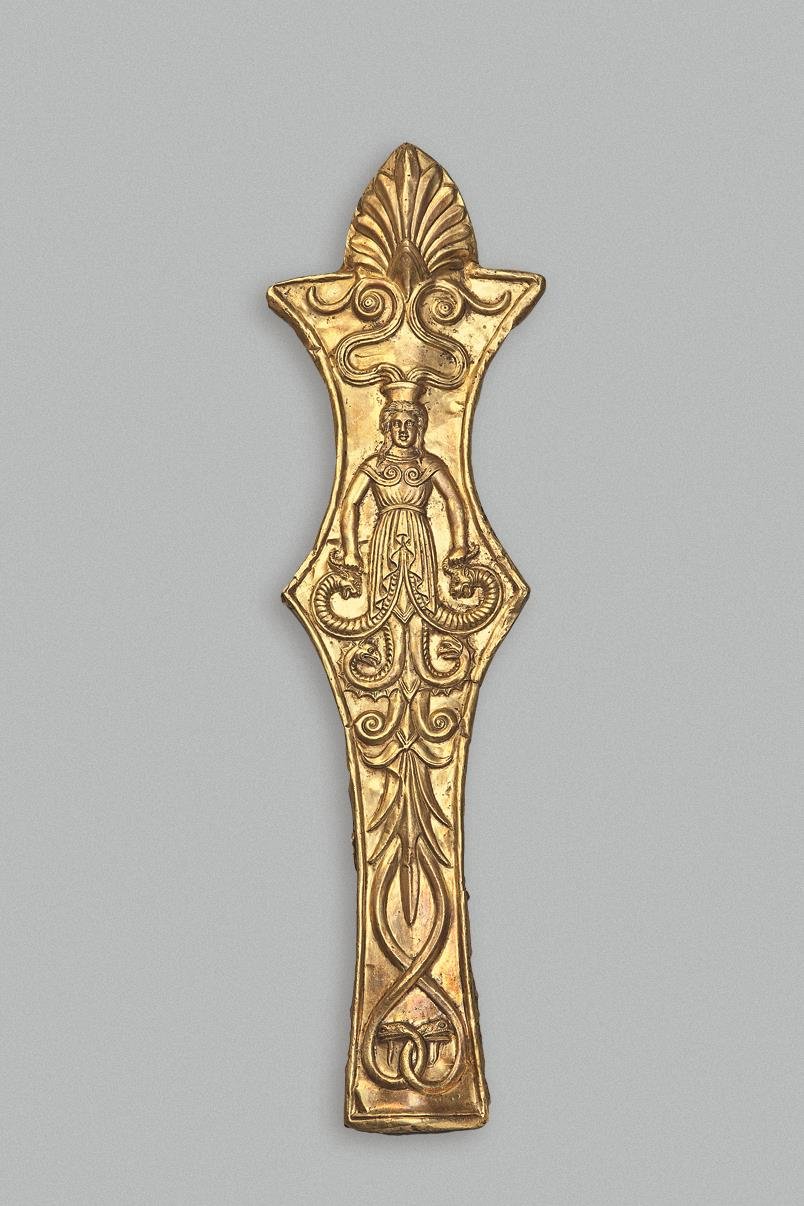Scythian horse frontlet with serpent woman (Echidna?) from the Tsimbalka kurgan 4th C. BCE
"The origin of the Scythians remains enigmatic and since antiquity has been the subject of varied and sometimes contradictory interpretations. Thus, Herodotus gives three different accounts of early Scythian history, which were partly illustrated in so-called "Greco-Scythian' decorative art. First, according to Greek tradition, 'Heracles, driving the cattle of Geryones, came to this land, which was then desert, but is now inhabited by the Scythians'; 'there he found in a cave a creature of double form that was half damsel and half serpent', with whom he had intercourse; 'from Scythes son of Heracles comes the whole line of the kings of Scythia'. Second, the Scythians themselves maintained 'that their nation is the youngest in all the world, and that it came into being in this wise. There appeared in this country, being then desert, a man whose name was Targitaus. His parents, they say - for my part I do not believe this tale, but it is told - were Zeus and a daughter of the river Borysthenes' (the modern Dnieper); 'he had three sons, Lipoxais, Arpoxais, and Colaxais, youngest of the three'; 'Lipoxais, it is said, was the father of the Scythian clan called Auchatae; Arpoxais, the second brother, of those called Katiari and Traspians; the youngest, who was king, of those called Paralatae.' The third story, to which Herodotus in common with modern scholars gives the greatest credence, is that the Scythians moved from Asia into Europe by way of the great steppe corridor. A generally similar account was given in the first century BC by the Greek historian Diodorus Siculus, namely that at first the Scythians lived along the Araxes river but later migrated to the foot of the Caucasus and the northern Black Sea region, and ultimately 'extended their power as far as the Nile in Egypt'."
-Scythians warriors of ancient Siberia - The BP exhibition - The British Museum, pg 23
Source:
Quote:
Scythians warriors of ancient Siberia - The BP exhibition - The British Museum, pg 23




Comments
Post a Comment